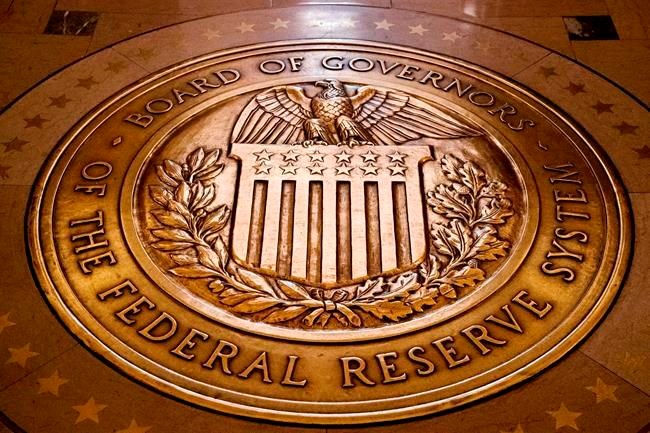WASHINGTON — The Federal Reserve moved with unprecedented force and speed Friday to pump huge amounts of cash into the financial system to ease disruptions that have escalated since the viral outbreak.
The New York Federal Reserve Bank said it will offer $1 trillion of overnight loans a day through the end of this month to large banks. That is in addition to $1 trillion in 14-day loans it is offering every week. Banks, so far, have not borrowed nearly as much as the New York Fed is offering, and the loans are quickly repaid. None of the funding is from taxpayer dollars. Wall Street analysts say the huge number is intended to calm markets by demonstrating that the Fed's ability to lend short-term is nearly unlimited.
The Fed is also buying Treasury bonds at a furious pace, and will soon run through the $500 billion in purchases it announced on Sunday. It is also accelerating its purchases of mortgage-backed securities. Most analysts expect they will buy more.
“The Fed has just worked with unprecedented speed,” said Steven Friedman, a former economist at the New York Fed and senior macroeconomist at MacKay Shields, an asset manager. "I think there will be no hesitation on their part about buying as many Treasuries and mortgage-backed securities as necessary."
All the Fed's emergency steps are intended to pump cash into a financial system that has seen a spike in demand for dollars as investors unload Treasuries, municipal bonds, and other securities. With the economy likely in recession, banks, money market funds and other institutional investors are increasingly wary about holding securities that may lose value.
Companies will see revenue and earnings plunge, while local and state governments are likely to see lower tax revenue. That makes it harder for them to borrow.
“There is a growing certainty that we're facing an economic contraction, so it's natural for investors to become more concerned about risk,” Friedman said. “The Fed is trying to play the role of shock absorber.”
The flood of selling has pushed up short-term borrowing costs for companies, states and cities, and banks, even as the Fed has tried to lower interest rates more broadly by cutting its benchmark rate on Sunday to nearly zero. The Fed's efforts are intended to offset those increases in borrowing costs, which could exacerbate the economic downturn by forcing companies and local governments to lay off even more workers.
“They've effectively thrown the kitchen sink at the markets and the economy,” said Gennadiy Goldberg, senior U.S. rates strategist for TD Securities.
Goldberg said the Fed's efforts are starting to bear fruit, with some short-term rates stabilizing.
The Fed is also trying to clear markets by ramping up its purchases. On Friday, it bought $75 billion of Treasurys and $47 billion of mortgage-backed securities. By comparison, when the Fed engaged in long-term asset purchases in its third round of quantitative easing in 2012, it bought $45 billion a month.
All told, the New York Fed has bought about $280 billion of Treasuries, more than half of its planned $500 billion. On Friday it said will buy $100 billion of mortgage-backed bonds next week, including $40 billion on Monday.
Those purchases provide more cash to banks, which are also seeing many corporate clients draw down billions of dollars on their credit lines.
Goldberg noted that the value of outstanding Treasurys has more than doubled since 2010, after the financial crisis, but banks are less willing to hold them, which makes the Treasury market less liquid.
That is a problem, because the $17 trillion Treasury market, the largest in the world, influences a wide range of borrowing costs, including rates for mortgages, credit cards and auto loans.
The Fed also announced Friday that it would expand an emergency lending program, which it just launched Wednesday, to loan money to banks, which would use the funds to purchase highly rated municipal bonds from money market mutual funds or from muni bond funds. The goal is to stabilize the $3.8 trillion muni bond market and ensure states and cities and other public entities, including hospitals, can borrow at low cost.
The emergency lending program, known as the Money Market Mutual Fund Liquidity Facility, was first used during the 2008 financial crisis, but its expansion to include muni bonds is a new step that wasn't taken back then.
States and cities are facing a looming cash crunch as revenue from sales taxes and other levies are likely to fall sharply in the coming weeks and months. At the same time, many public institutions are facing higher costs, particularly hospitals and other health programs.
The Fed has in the past come under criticism from Democrats in Congress for not using its emergency lending powers to assist struggling local governments. House Speaker Nancy Pelosi asked Federal Reserve Chair Jerome Powell on Tuesday to consider doing so. The Fed said its action Friday was in response to turmoil in financial markets.
Also Friday, the Fed said it would expand its currency exchanges with five central banks, including by providing week-long exchanges, or currency swaps, every day rather than once a week.
The Fed provides dollars to overseas central banks because some business is conducted overseas in dollars and foreign banks also provide dollar-denominated loans to their customers.
___
This story has been updated to correct the size of the Treasury market. It's $17 trillion, not $17 billion.
Christopher Rugaber, The Associated Press



